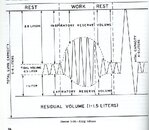Please correct me if I am wrong...... but isn't a diver in a wetsuit or even in no exposure suit at all still exposed to that exact same amount of pressure on their chest and back at that depth?
No, you are not correct. The wetsuit compresses, and in fact a wetsuit at about 45 feet of freshwater looses its buoyancy completely (I know, as I took off my weight belt in Clear Lake, Oregon at 45 feet and swam around an neutral buoyancy). So the material compresses, but not against the diver as the pressure on the suit is in both directions (from inside as well as outside), and is therefore equalized. The diver’s lungs are also pressurized by the regulator providing air at the same ambient pressure as the surrounding water. But, you still need to clear your ears; if you don’t then there is extreme pain and a rupture of the ear drum.
SeaRat
Respectfully John, I DO completely agree with you that the wetsuit material compresses from all directions and looses buoyancy, but I still believe my statement above that the diver himself or herself is still subject to the same ambient water pressure that they would be without the wetsuit.




